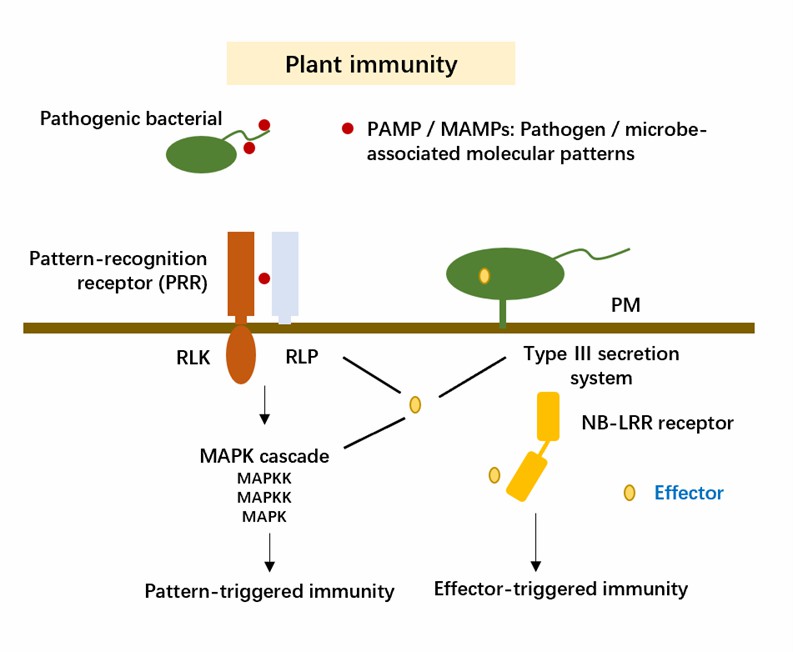In general, pathogens are perceived by several different recognition systems in plants. The first recognition system is mediated by the perception of pathogen-associated molecular patterns (PAMPs), such as bacterial flagellin, fungal chitin, and damage-associated molecular patterns (DAMPs) released by the disrupted host plant tissues. PAMPs and DAMPs are perceived by cell surface-localized pattern recognition receptors (PRRs), leading to pattern-triggered immunity (PTI). In resistant plants, however, these effectors are often recognized by intracellular nucleotide-binding domain leucine-rich repeat (NLR)-type immune sensors, leading to NLR-triggered immunity.
Lifeasible provides analysis services for recognizing nematodes by plant immune systems, to help our customers worldwide in the field of plant science. Our experts will answer your questions comprehensively and carefully and help you solve the problems in your studies. We guarantee satisfied and reliable results for our customers all over the world.
 Fig.1 Plant immune system.
Fig.1 Plant immune system.
Surface-localized PRRs are also known to recognize plant nematode effectors. We also provide analysis services for the recognition of plant nematodes by PRR, such as Cf-2 which recognizes both nematode pathogens by monitoring RCR3pim.
Lifeasible offers analysis services for the recognition of nematodes by the plant immune system. Our advanced technical platforms help our clients solve the problems they may encounter in research based on decades of experience. If you are interested in our services or have any questions, please feel free to contact us or make an online inquiry.
Lifeasible has established a one-stop service platform for plants. In addition to obtaining customized solutions for plant genetic engineering, customers can also conduct follow-up analysis and research on plants through our analysis platform. The analytical services we provide include but are not limited to the following:
Get Latest Lifeasible News and Updates Directly to Your Inbox
Adaptive Evolutionary Mechanism of Plants
February 28, 2025
Unraveling Cotton Development: Insights from Multi-Omics Studies
February 27, 2025